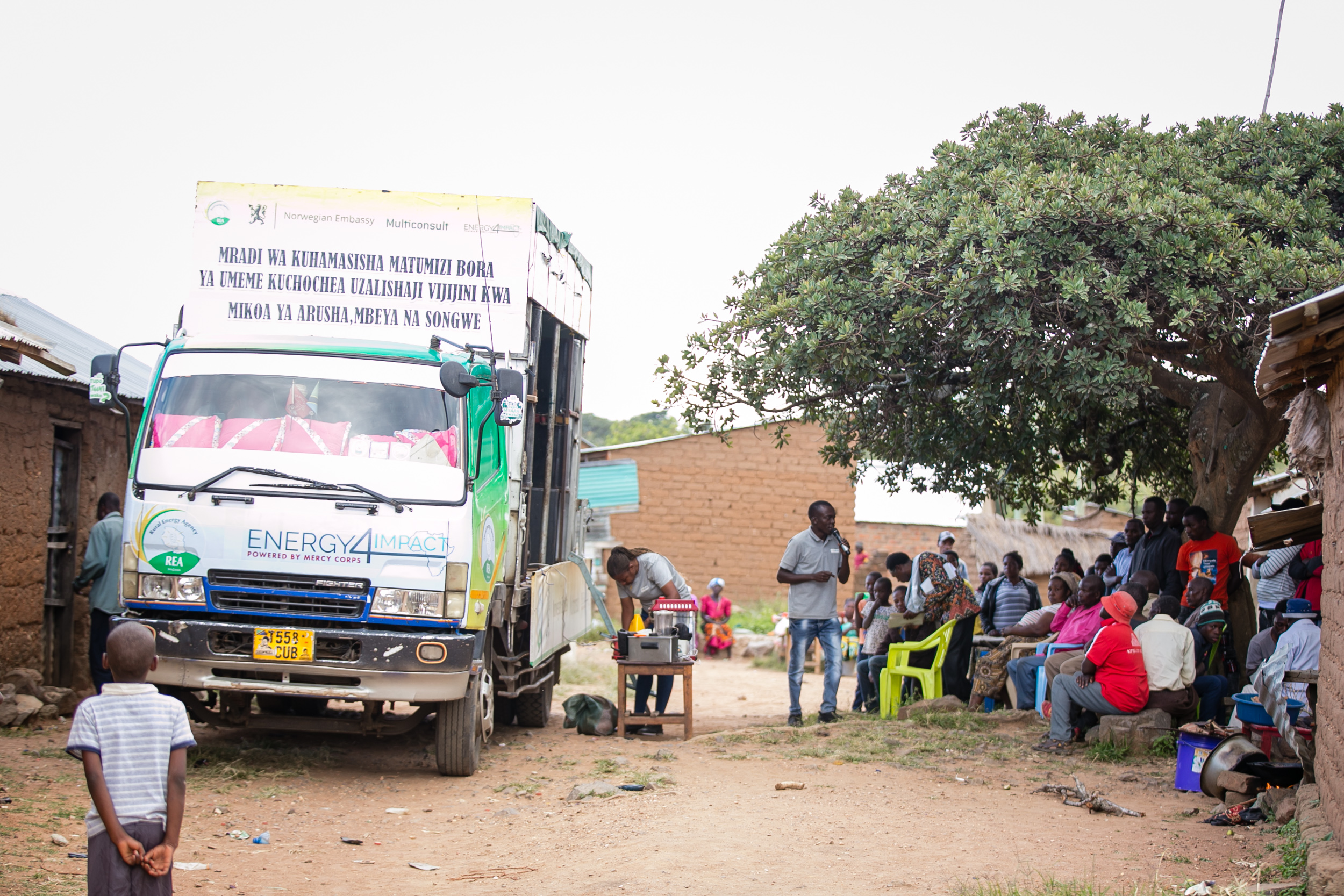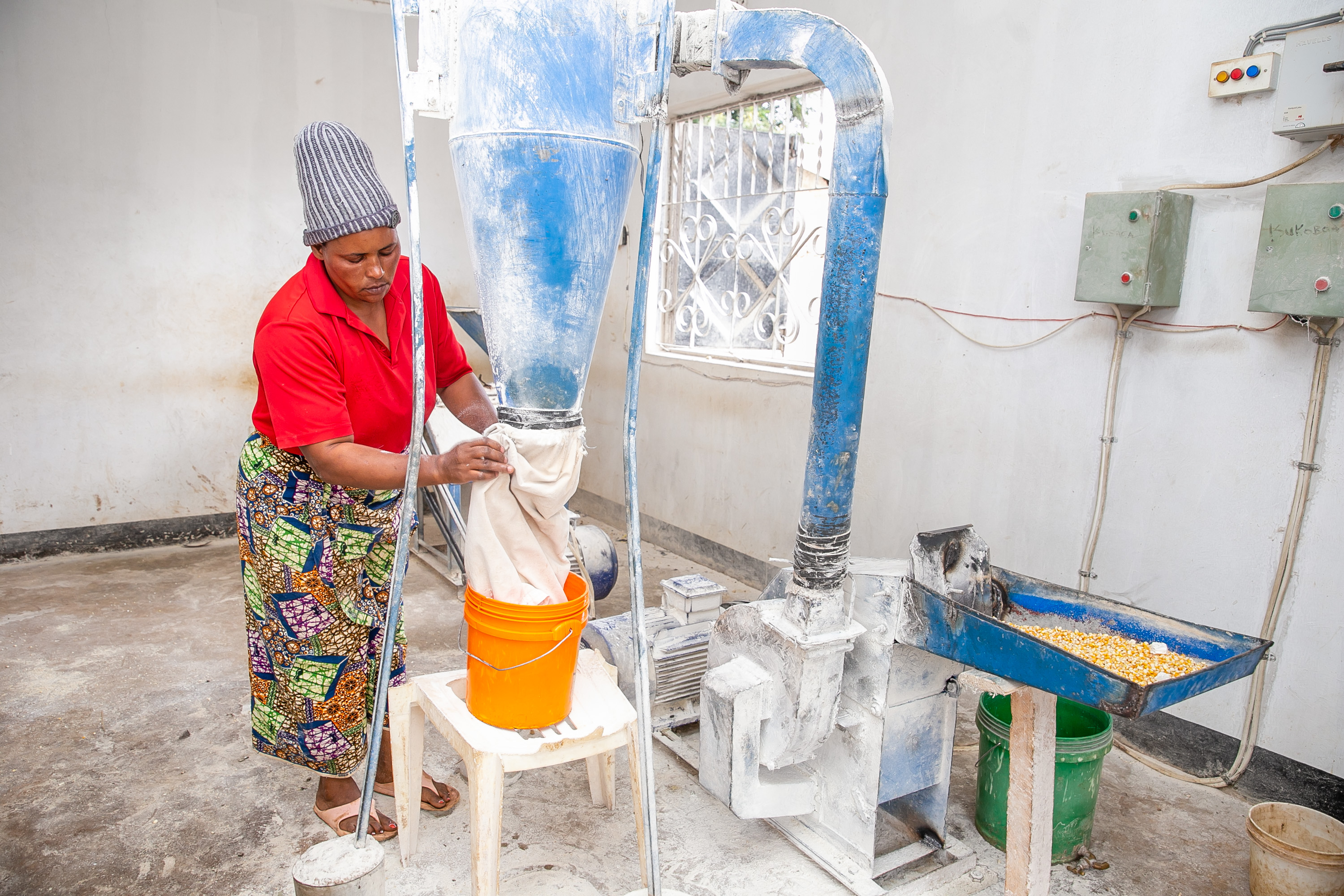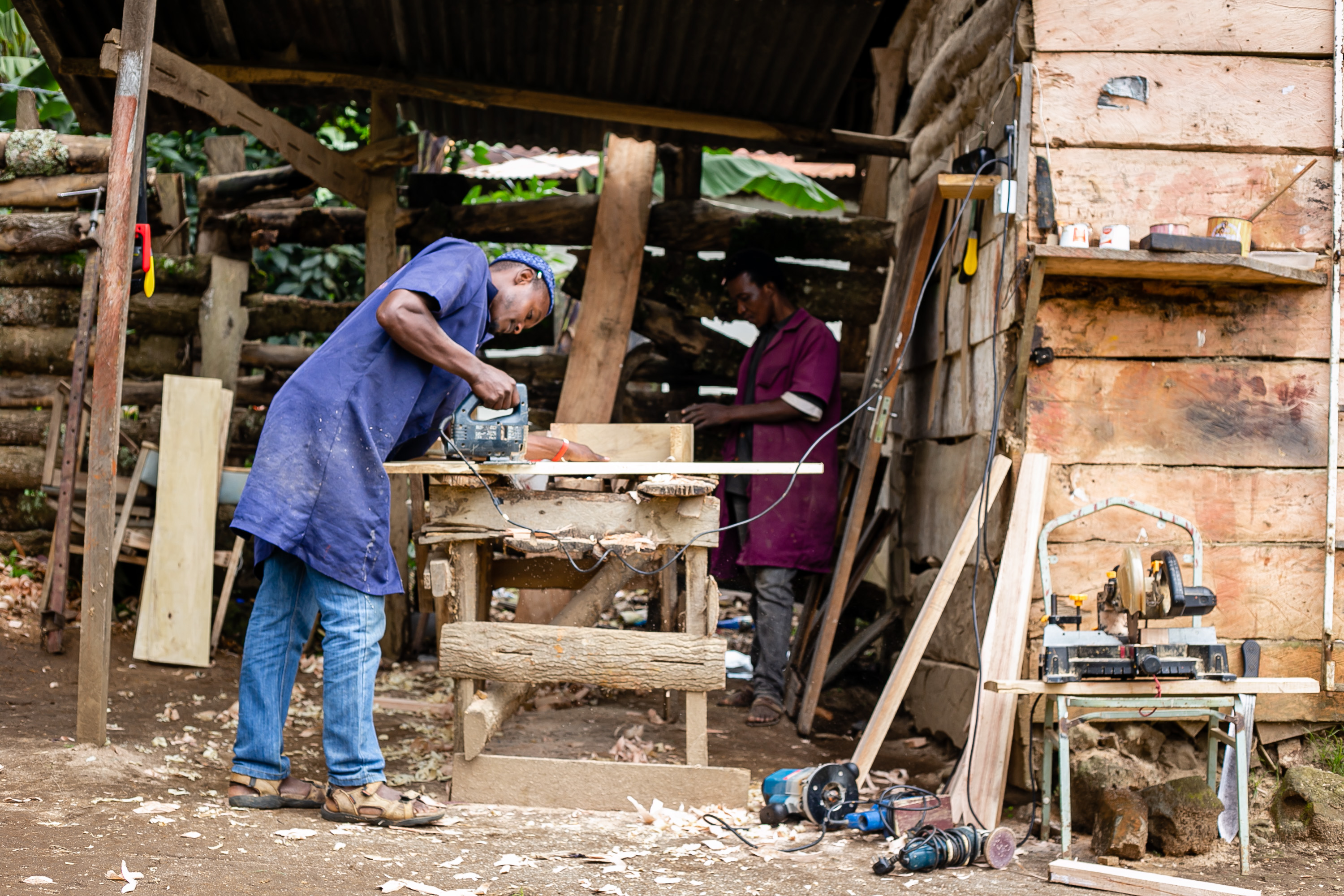Unlocking economic potential: the business case for investing in productive use of energy in grid expansion projects
Across the vast rural landscapes of Africa, millions of people continue to live without electricity. This persistent energy deficit reinforces socio-economic inequalities, hindering progress for countless communities. It is estimated that this energy gap results in annual GDP losses of 2% to 4%, undermining economic growth, jobs and investment. In their 2022 analysis, the International Energy Agency underscores that extending national grids represents the “least costly and most prudent” option for providing electricity access to approximately 45% of those who currently lack it. However, while grid expansion and densification are vital components of African governments' efforts to improve energy access in under-served rural areas, these projects often grapple with a common challenge: low demand.
This low take-up by consumers has profound implications. Firstly, it casts a shadow over the financial viability of power utilities. When grid expansion fails to yield new connections or attracts low-consumption users, capital and operational costs can outstrip revenues, placing immense strain on the already-fragile finances of utilities. This not only jeopardises their sustainability but also reduces the resources available for further rural electrification projects, creating a cycle of underinvestment.
Secondly, and more fundamentally, it compromises the primary objective of electrification projects. Beyond mere infrastructure expansion, the aim of grid investments is to drive socio-economic development, through the creation of livelihood opportunities, higher quality of local services, strengthening of food security, and much more. Contrary to the common misconception that new connections automatically spur transformative change at a local level, such progress is unlikely unless communities can effectively harness electricity. Without this, the true potential of electrification projects remains unrealised.
There is therefore a compelling business case for investing not only in the poles and wires, but also in empowering communities to seize the many opportunities that come with improved energy access.
Newly electrified communities need dedicated support to capitalise on energy access
Proactive interventions are needed, which is where Productive Use of Energy (PUE) strategies comes into play. By supporting the income-generating activities of entrepreneurs in agriculture, community services, commercial ventures, communications and other sectors, PUE strategies can transform remote villages and hamlets into thriving hubs of productivity. When applied to rural electrification projects, PUE strategies offer utilities the tools they need to foster economic growth. At the same time, the adoption of electricity by small-scale industries and commercial enterprises helps create a critical mass of electricity consumption, brightening the financial outlook for utilities.
This is not a novel concept. PUE strategies have been gaining recognition amongst pioneering mini-grid project developers as powerful drivers of sustainability in the fragile business case for mini-grids. A diverse array of strategies and approaches have been widely discussed, tested and applied in off-grid contexts, including coordinating consumer financing, facilitating the acquisition of income-generating tools, enhancing business acumen, identifying diversification opportunities, and easing access to markets. With varying degrees of success, mini-grid developers have deployed these strategies to stimulate energy demand, thus increasing the profitability, financial viability and longevity of their projects.
However, such strategies are rarely integrated into national utilities' grid-extension and densification initiatives, which typically prioritise expanding grid coverage by extending transmission infrastructure to new areas, or connecting more customers within the existing network. Whilst community-based education sessions are sometimes used to promote new connections, they invariably fail to include guidance on stimulating productive energy use by businesses and small industries.
Yet these commercial customers are essential for grid expansion economics. Their consistent and predictable electricity demand during daytime hours, when domestic demand is lower, contributes to grid load balancing and enhances overall grid stability. Additionally, their higher consumption levels generate significant revenue for the utility.
However, we have found that small business owners need a package of support to ascertain how to capitalise on energy access most effectively.
Drawing upon insights from our collaboration with Tanzania’s Rural Electrification Densification Project, this article illustrates how locally relevant and market-driven interventions to stimulate productive energy use can be tailored to suit situations where the grid expands into underserved communities. While these interventions do require dedicated capital investment, our approach has demonstrated that they are, in fact, extremely cost-effective. Based on our experience, an investment in PUE stimulation in the range of 5-10% of the capital expenditure cost of extending the grid resulted in a 100% growth in revenues from business customers for the utility company. Collaborations like these can truly prove instrumental in helping national utilities to enhance the long-term viability of grid extension and densification projects and realise their full potential by contributing to local economic development.
Integrating PUE strategies of energy in Tanzania’s Rural Electrification Densification Project: a case study
Between 2018 and 2023, Energy 4 Impact and the Norway-based engineering consultancy Multiconsult collaborated with Tanzania’s Rural Energy Agency (REA) to pilot strategies aimed at increasing electricity consumption for commercial purposes in Tanzania, within the framework of the Rural Electrification Densification Project (REDP).
In the initial phase, spanning from 2018 to March 2019, our joint effort focused on stimulating on-grid demand through PUE strategies in the Tanga and Pwani regions. During this period, we worked with 349 entrepreneurs, equipping them with the tools needed to enhance their business acumen, explore new market opportunities, diversify their offerings, and secure financing for the acquisition of electric tools and appliances. The results were remarkable, with an 80% increase in electricity consumption and a 87% boost in average profits.
Building on the success of the initial phase, our second pilot initiative, conducted from September 2021 to June 2023, expanded to newly electrified hamlets across the Mbeya, Songwe, and Arusha regions. This broader endeavour involved 910 entrepreneurs. Through the provision of business mentorship to 690 entrepreneurs, and linkage to appliance suppliers and loan providers, mentored businesses acquired over 500 PUE appliances and achieved an average revenue increase of 109% and a corresponding 111% rise in profit. Moreover, entrepreneurs in these regions increased their electricity consumption by an impressive 102%, transitioning from a baseline average of 55kWh per business per month to 111kWh. Local communities not only benefitted from improved services and products, this business growth generated 740 new jobs.
These results underscore the clear win-win of PUE strategies for both entrepreneurs and rural electricity service providers. By sharing insights and recommendations that have emerged from these two pilot phases, we aim to facilitate the expansion of on-grid PUE interventions on a broader scale and in different contexts across sub-Saharan Africa.
Ensuring awareness raising efforts are locally relevant
Raising awareness amongst local entrepreneurs of the income-generating potential of PUE must be at the core of rural electrification projects, but it should be tailored to address specific gaps in the local provision of goods and services. Comprehensive site assessments enabled the team to map the village- and hamlet-level value-chains in which energy interventions would have the most profound impact. For example, if a value-chain analysis showed that cold storage was a bottleneck, investing in energy-efficient refrigeration facilities would benefit the local economy.
Travelling to often hard-to-reach rural areas, roadshows and PUE clinics highlighted how appliances could improve productivity and open up new opportunities within those key value-chains, also identifying where and how they could be acquired (geographical distance from suppliers is often a considerable barrier for entrepreneurs, but we believe that PUE suppliers could take inspiration from solar home system distributors and set up networks of local agents to order, receive, and stock appliances). Local PUE champions already using electricity to maximise their productivity were deployed to mobilise recruitment, and proved particularly effective at engaging and winning the trust of their fellow entrepreneurs.
Such activities served to ignite a spark of interest around PUE that helped recruit entrepreneurs onto the programme, but our experience, as outlined in the next section, showed that awareness alone is not enough. To make informed choices that will take their business to the next level, entrepreneurs need more tailored support.
The power of mentorship for catalysing business growth
In our quest to understand the level of mentoring support and investment that would prove most effective, we divided the recruited entrepreneurs into groups. A control group received only written training and promotional materials. A second group of entrepreneurs received scaled-back mentoring in business skills which largely consisted of monthly in-person training sessions as part of a group. A third group engaged in one-on-one in-person monthly sessions with a mentor highly familiar with their business and able to offer in-depth tailored guidance.
Predictably, the second and third groups made much more striking progress compared to the control group. Mentored businesses were five times more likely to acquire an appliance and 10 times more likely to acquire a loan. The median monthly profit of mentored businesses increased to 300,00 TZS per month, compared to just over 100,000 TZS for the control group, whilst electricity consumption amongst mentored businesses increased by 102%, compared to 31% in the control group.
Interestingly, the lack of a significant difference in results between the two mentored groups suggests that group sessions were just as effective as the one-to-one sessions. Testifying to the importance of the personal touch, mentors were still able to foster trusting relationships with entrepreneurs in the second group, often answering follow-up questions by phone after the group training sessions. Whilst an investment is still required by the utilities to carry out group mentoring, the lower cost, not to mention the rapid and sizeable return on investment, provides a compelling argument for integrating this as a standard approach in electrification programmes.
Taking a flexible approach to business formalisation
In many countries, including Tanzania, businesses are only legally required to register for tax after reaching a certain income threshold. It is often assumed that encouraging entrepreneurs to formalise their businesses (i.e., register with local authorities) is an essential step in the growth trajectory of any small business, enabling them to acquire larger formal loans for instance. Testing that presumption, we found that pushing entrepreneurs to formalise seemed premature in many cases, burdening them with additional costs for the frequently hypothetical benefit of becoming eligible for a formal loan. As well as the time and money spent travelling to government offices, the costs of formalisation for the entrepreneur include computerising their financial records, buying permits, and henceforth paying tax on a regular basis (costs for the programme itself include guiding the entrepreneurs on how to jump such bureaucratic hurdles for the first time). Moreover, many entrepreneurs, as explained below, actively preferred to opt for informal loans instead, or avoid debt entirely by using their own savings. We therefore avoided any ‘one size fits all’ approach to encouraging formalisation.
Formal loans are not the only way to afford appliances
Forging closer relationships between appliance suppliers, entrepreneurs and financial institutions can increase the availability and accessibility of suitable loan products. After site assessments identified local financiers, outreach from the programme team helped these institutions recognise that the improved business management and record-keeping of recruited entrepreneurs made them promising candidates for loans. However, in practice, many opted to eschew formal loans for a variety of reasons.
We found that the stringent requirements that come with formal loans from financial institutions, which include evidencing collateral as well as formalisation, meant that mobile money loans or informal loans were a more appealing option for many entrepreneurs. These alternative borrowing options offered more relaxed requirements and more incremental repayment plans, making them an attractive choice. In fact, amongst the entrepreneurs who couldn’t meet the cost of appliances with their own savings, 44% opted for informal loans through mechanisms such as savings and credit cooperatives. Informal loans were particularly attractive to women and youth more likely to lack the collateral and financial history that financial institutions require.
Whilst it is important to note that building creditworthiness with formal loans still holds a clear advantage, that decision must come at the right time and stage for each individual business.
The value of acquiring small appliances should not be overlooked
For various reasons, many entrepreneurs were disinclined to acquire the larger formal loans typically needed to purchase more expensive machinery. Whilst utilities often view heavy-duty tools or appliances as essential for providing the reliable 'anchor' loads that they crave, our experience revealed that smaller appliances can also significantly boost electricity demand when used in greater numbers. These smaller appliances are more affordable, which makes it easier for entrepreneurs to use their available cash reserves or apply for loans as part of a group. Yet they can still make a pivotal difference to productivity and income, helping entrepreneurs to pay for more stock or staff for example. Striking a balance between large and small appliances therefore helps ‘democratise’ the impact of a programme by spreading its benefits beyond high-consumption users.
Considerations around gender equality and social inclusion
Although the PUE champions were trained to prioritise the inclusion of female entrepreneurs, recruiting women in equal numbers to men still proved tricky. This is largely because traditional gender roles often assign women responsibilities for domestic and seasonal agricultural tasks, so it is important to schedule events and training with their availability in mind. However, once women were on the programme, their results in terms of appliance acquisition and increased income were on a par with the men, which suggests they don’t necessarily need specialised training to overcome gender-based disparities in skills or confidence. In fact, the number of women accessing formal or semi-informal loans for the first time saw a remarkable 323% increase.
Breathing new life into Arusha’s remote communities
In the heart of Arusha, a region nestled at the base of majestic Mount Kilimanjaro, we can find tales of transformation in those places where PUE strategies have been put into action. Whilst Arusha boasts well-developed urban and tourist centres, its less-visited villages and hamlets have long grappled with economic challenges. Marsha Elinazi, business mentor with Energy 4 Impact, knows the hinterlands of Arusha well:
Despite the advent of electricity, many of these remote communities have struggled to thrive. Through guidance and mentorship, we’ve equipped local entrepreneurs with the business acumen they needed to navigate the complexities of the modern marketplace. It has been a pleasure to witness entrepreneurs subsequently employ those tools to breathe new life into their businesses.
One shining example is Zefania Kaaya, a skilled carpenter based in the hamlet of Nkoavele in the foothills bordering Arusha National Park. Zefania worked out of his small wood workshop for thirty years before becoming ‘enlightened’ (his word) to the potential of PUE. Guided by his business mentor, Zefania boosted his workshop’s productivity by investing his hard-earned savings in an electric router and jigsaw. Inspired by newfound possibilities, Zefania embarked on a daring venture into entirely new lines of business. He acquired grain milling and hulling machinery so he could produce and sell flour. Additionally, he ventured into metalwork, securing a welding machine that fueled the exponential growth of his business venture. This expansion led to Zefania employing four additional staff members, resulting in an astonishing 700% increase in his income. Beyond his workshop, Zefania diversified further, investing in land and venturing into pig farming, all while constructing additional buildings for future rental purposes.
Zefania’s success is just one of the many inspiring stories of transformation from this programme that exemplify the remarkable impact of PUE strategies on individuals and communities. We hope that key stakeholders will now turn inspiration into action.
The prospect for replicating PUE strategies
With the understanding that electricity access alone is not enough to spur socioeconomic development comes the realisation that PUE strategies represent a vast and largely untapped opportunity in the on-grid space. REA plans to electrify 36,000 hamlets across Tanzania in coming years, with Uganda and Kenya targeting comparable numbers. In this context, the collaboration with Tanzania’s REDP programme could serve as a roadmap towards an exciting future in which more financially viable rural electrification projects help to transform newly electrified communities into vibrant centers of productivity. This partnership has shown what is possible to achieve with a relatively modest PUE investment, equivalent to just a fraction of the capital expenditure required for extending the grid. Now it is imperative for national utilities, with the support of local and national governments, to take the lead and expand upon these solutions. By scaling up these efforts, we can fully unleash the benefits of electrification, profoundly enhancing the wellbeing of communities across sub-Saharan Africa.





